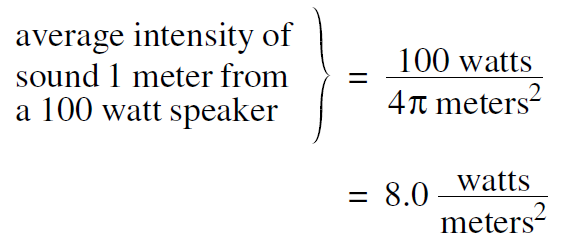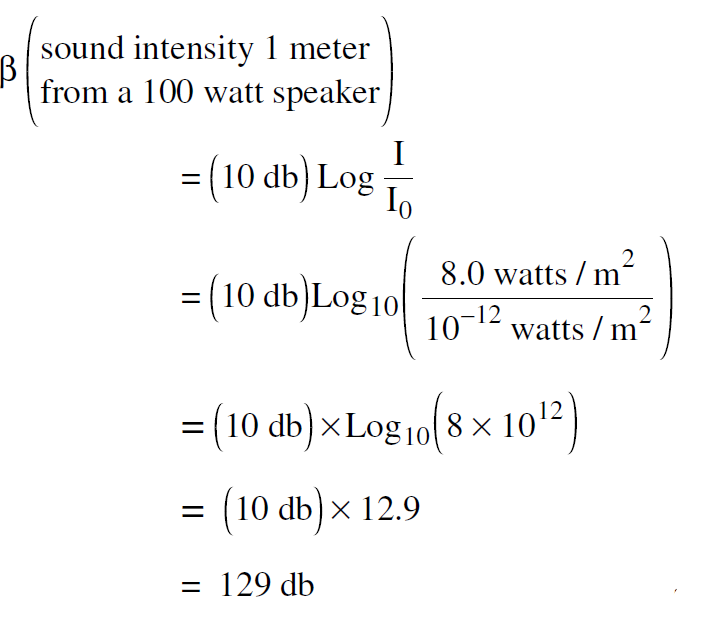Sound Meters
Laboratory experiments involving the intensity or loudness of sound are far more difficult to carry out than those involving frequencies like the Fourier analysis experiments already discussed. From the output of any reasonably good microphone, you can obtain a relatively good picture of the frequencies involved in a sound wave. But how would you go about determining the intensity of a sound from the microphone output? (There are commercial sound meters which have a scale that shows the ambient sound intensity in decibels. Such devices are often owned by zoning boards for checking that some factory or other noise source does not exceed the level set by the local zoning ordinance, often around 45 db. The point of our question is, how would you calibrate such a device if you were to build one?)
The energy in a wave is generally proportional to the square of the amplitude of the wave. A sound wave can be viewed as oscillating pressure variations in the air, and the energy in a sound wave turns out to be proportional to the square of the amplitude of the pressure variations. The output of a microphone is more or less proportional to the amplitude of the pressure variations, thus we expect that the intensity of a sound wave should be more or less proportional to the square of the voltage output of the microphone. However, there is a great variation in the sensitivity of different microphones, and in the amplifier circuits used to produce reasonable signals. Thus any microphone that you wish to use for measuring sound intensities has to be calibrated in some way.
Perhaps the easiest way to begin to calibrate a microphone for measuring sound intensities is to use the fact that very little sound energy is lost as sound travels out through space. Suppose you had a speaker radiating 100 watts of sound energy, and for simplicity let us assume that the speaker radiates uniformly in all directions and that there are no nearby walls.
If we are 1 meter from this speaker, all the sound energy is passing out through a 1 meter radius sphere centered on the speaker. Since the area of a sphere is 4π r2 , this 1 meter radius sphere has an area of 4π meters2, and the average intensity of sound at this 1 meter distance must be
 ......(1)
......(1)
If we wish to convert this number to decibels, we get
 ..........(2)
..........(2)
From our earlier discussion we see that this exceeds the threshold of pain. One meter from a 100 watt speaker is too close for our ears. But we could place a microphone there and measure the amplitude of the signal output for our first calibration point.
Move the speaker back to a distance of 10 meters and the area that the sound energy has to pass through increases by a factor of 100 since the area of a sphere is proportional to r2. Thus as the same 100 watts passes through this 100 times larger area, the intensity drops to 1/100 of its value at 1 meter. At a distance of 10 meters the intensity is thus 8/ 100 = .08 watts/m2 and the loudness level is
 ..........(3)
..........(3)
We see that when the intensity drops by a factor of 100, it drops by 20 db or 2 bells.
To calibrate your sound meter, record the amplitude of the signal on your microphone at this 10 meter distance, then set the microphone back to a distance of 1 meter, and cut the power to the speaker until the microphone reads the same value as it did when you recorded 100 watts at 10 meters. Now you know that the speaker is emitting only 1/100th as much power, or 1 watt. Repeating this process, you should be able to calibrate a fair range of intensities for the microphone signal. If you get down to the point where you can just hear the sound, you could take that as your value of I0, which should presumably be close to I0 = 10–12watts/m2 . Then calibrate everything in db and you have built a loudness meter. (The zoning board, however, might not accept your meter as a standard for legal purposes.)
 الاكثر قراءة في الصوت
الاكثر قراءة في الصوت
 اخر الاخبار
اخر الاخبار
اخبار العتبة العباسية المقدسة


